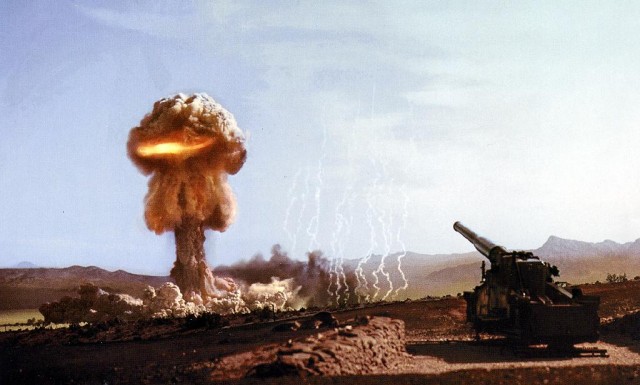Nukeporn
I’m finding it hard to write lately because there are so many shockingly bad takes. Twitter provides a continuing flutter of them, like this morning’s wet snowflakes, and points to worse op-eds. It’s mostly the war, but the decisions to declare the pandemic over contribute.
Dan Nexon tweeted last week that all discussions of whether NATO should have embiggened are discussions of priors. So are discussions of possible nuclear weapon use and many other things. Last week we had the no-fly zone. Yesterday got the week off to a masculine start with discussions of impotence and muscularity in US foreign policy. Mainly from old white men, and that’s consistent with my priors as well as theirs.
The question of nuclear weapons, on the battlefield or otherwise, keeps coming up. A number of disappointed (and poorly informed) people keep asking why Russia isn’t deterred from attacking Ukraine but the US is deterred from attacking Russia if nuclear weapons exist, which slides into the mistaken idea that Ukraine once had a full-up nuclear arsenal or (Russian propaganda warning) is building one now. I’ve dealt with that here.
There are two distinct questions as to whether nuclear weapons will figure in the Russia-Ukraine war: Will Putin use battlefield nuclear weapons on Ukraine? and Is it likely we could wind up in a world-destroying nuclear exchange?
The answer to the second is not at present, but the answer to the first might lead us there.
I recently spent some time trying to understand the early development of nuclear war strategy. It turns out that nuclear war strategy is rather simple, and the same arguments have been recapitulated multiple times since then. A strategic (against each other’s home territory) nuclear exchange is the end of the world as we know it.
In such a war, the first attacker has the advantage in taking the other’s nuclear weapons. The counter to that is to develop an arsenal that can’t be destroyed in the first strike and can take out the attacker’s country. The details of setting up that second strike are the subject of argument and elaboration, but the overall strategy is simple. Both the United States and Russia have credible second strikes, which sets up a stalemate called mutual assured destruction, or MAD.
What continues to intrigue is whether nuclear weapons can be used in a way that is not world-ending. Through the 1950s, a plethora of small nuclear weapon designs were developed and fielded. The Davy Crockett, an artillery shell, suffered from the limitation that the launcher’s range left the launching crew within the blast’s effects. Another might be carried between a parachuter’s legs. An atomic mine, to be buried, required warmth from a chicken living with it.
The United States has largely given up on the more absurd tactical nuclear weapons; George H. W. Bush eliminated the last of them as a goodwill gesture to Mikhail Gorbachev as the Soviet Union collapsed. A couple hundred US weapons in Europe are called tactical; they are air-delivered B-61 bombs. Russia has retained something like 2000 tactical nuclear weapons, probably including a variety of types.
Nobody has come up with a strategy for using tactical nuclear weapons that doesn’t turn into a strategic exchange. If someone claims they have such a strategy, it is because they have done a lot of hand-waving.
William J. Broad at the New York Times has a go at the small-nuke strategy. There have been and will be others. The scenario is always that the war is going badly for one side, in this case the Russians, and they detonate a small nuke, over the North Sea perhaps, or perhaps on a Ukrainian military base. The idea is that this would “project strength” and warn the other side that they were willing to go nuclear. This has also been called “sending a message.”
Nuclear weapons are extremely blunt and ambiguous instruments with which to send a message. Diplomatic channels are available, even in a war, for something more likely to be understood. With a nuke, the message could equally be taken to be “All bets are off.”
For Russia, military analysts note, edgy displays of the less destructive arms have let Mr. Putin polish his reputation for deadly brinkmanship and expand the zone of intimidation he needs to fight a bloody conventional war.
So far, Russia has claimed to have used hyperbaric and hypersonic weapons in Ukraine. The US has wavered on confirmation, and open sources have not confirmed these uses. These weapons do not partake of the taboo against being the first nation to use nuclear weapons in combat since World War II. In any case, more ambiguity potentially leading up to the prized “escalate-to-deescalate” scenario. This is what happens when war becomes the center of thinking and diplomacy is excluded.
Many responses are possible to a single small-nuke detonation, including a similar one in answer. There are no guarantees that a single detonation would convince the other side to back off or that the victim would consider it small. A nuclear detonation would generate a significant public response that would influence a nation’s leaders, who might themselves feel some emotion. There are many ways to misinterpret such a signal.
But the fantasy persists and generates horror, clicks, and money for defense contractors, so we will see more of it.
Here’s something I wrote two years ago about the fantasy.
Cross-posted to Nuclear Diner



